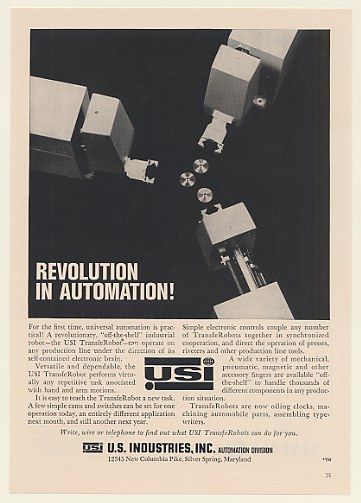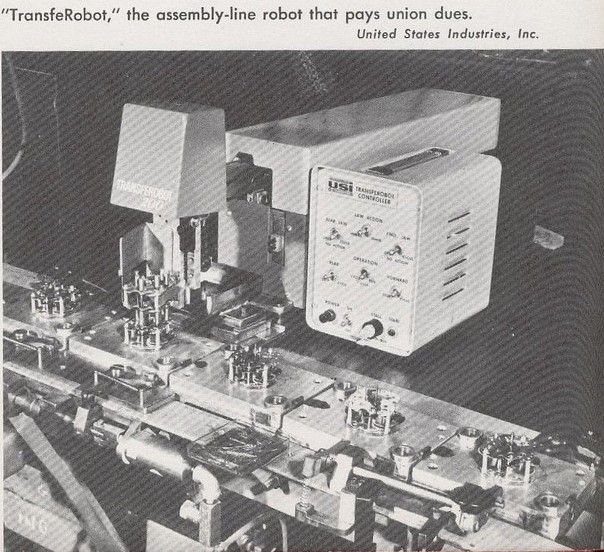
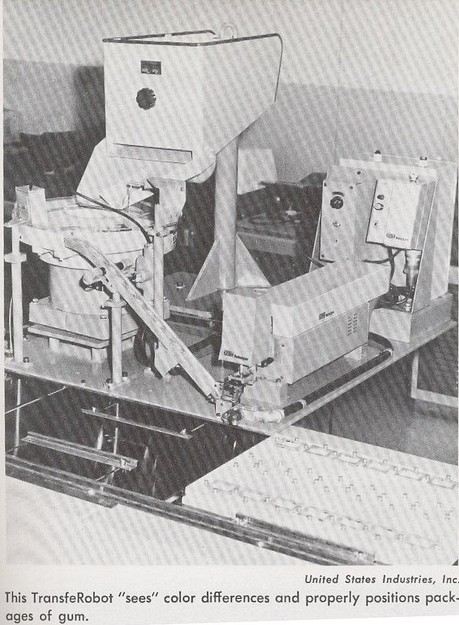
TRANSFER ROBOT 200 – NEW BOND STREET
2607.10 | TRANSFER ROBOT 200 – NEW BOND STREET
(1:13:11:00 – 1:14:31:00) 1961 London.
LS. Mr Miduch, the mechanic, switches on three robots. CU. Mechanic looking on. CU. Robots working. CU. Switch panel. CU. One robot working. MS. Three robots working together, they pause and two robots wait for signal from first then continue. MS. The inventor Mr Shelly, talking to mechanic, Mr Miduch and to camera – no sound.
(Orig. Neg.) Date found in the old record – 14/08/1961.
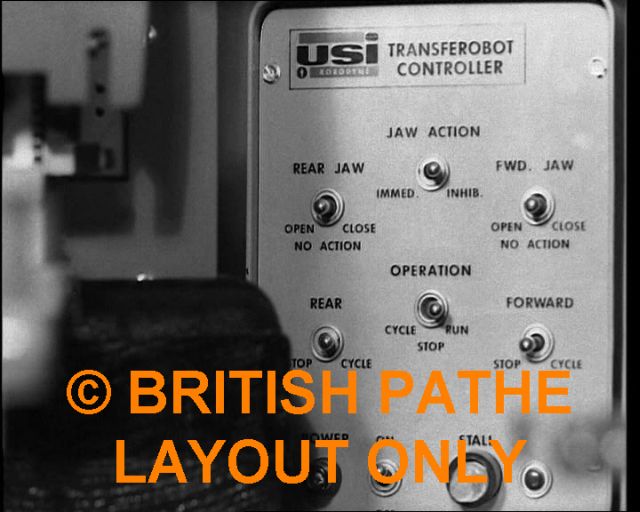
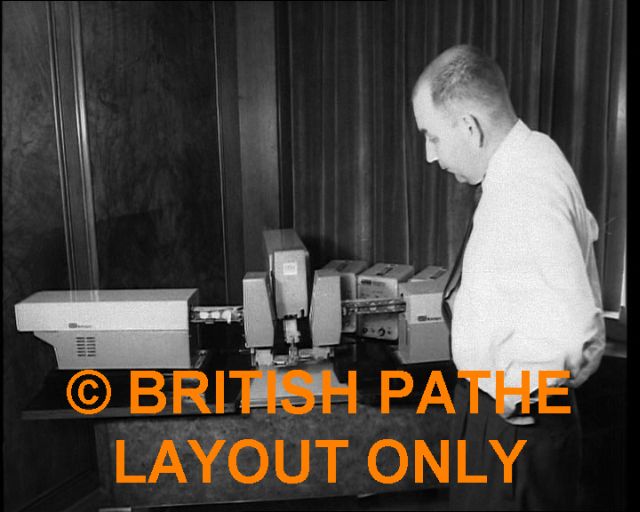
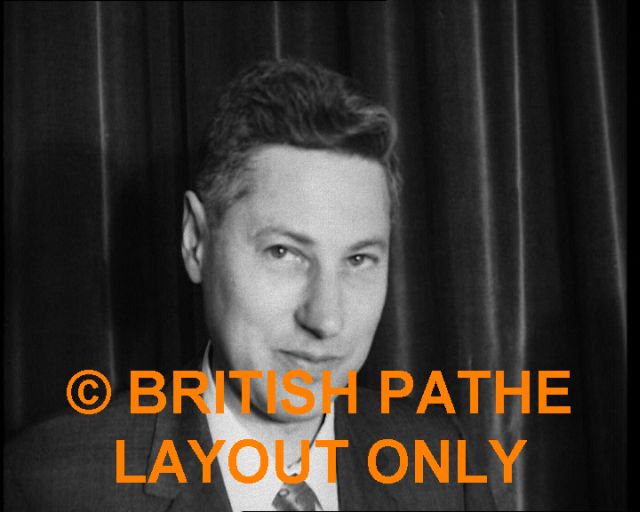
Edwin F. Shelley.
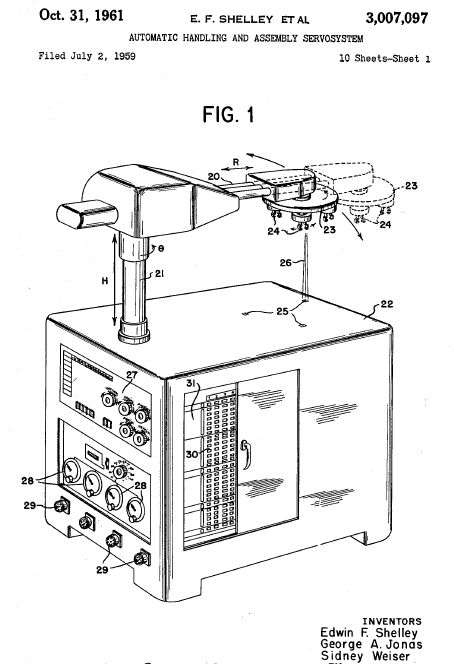
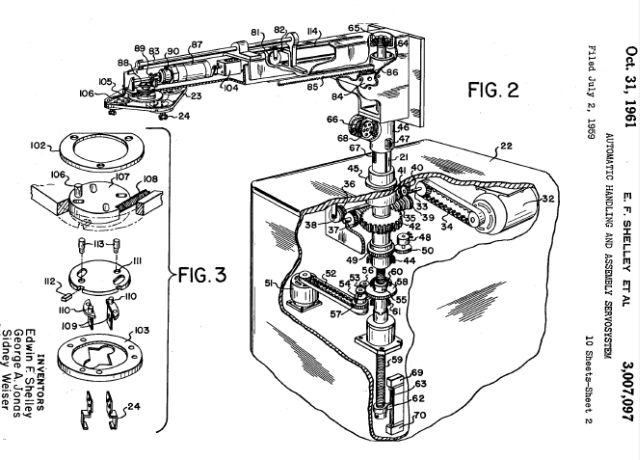
Automatic Handling and Assembly Servosystem by E. F. Shelley et al. See full patent details here.
Patent number: 3007097
Filing date: Jul 2, 1959
Issue date: Oct 31, 1961
N/C-type programming for robots was pioneered in the 1950s by Edwin F. Shelley and his colleagues at US Industries. While research director at the Bulova Watch Company, Shelley sought ways to eliminate repetitive, monotonous manual tasks typical of light assembly work. In 1959, after moving to US Industries, Shelley filed for a patent on an "automatic handling and assembly servosystem," a device which evolved into US Industries' TransfeRobot. This fully programmable positioning system was designed for precision parts transfer and accurate placement operations for small parts, and had closed loop positioning control in three axes. Unlike the record-playback Unimate, the Transferobot was programmed much like a plugboard-type N/C machine. A kinematic study of the task to be performed was made to break it down into a series of discrete motions described as a sequence of positions. These preselected motions (and times) were listed in order on a process sheet and then transcribed onto a cardboard template used to pre-set the machine control. The template was placed over a panel of switches on the machine control and indicated which switches had to be thrown to achieve the desired sequence of motions. (The template also constituted a permanent record of the program which could be used to reconfigure the machine identically for future performance of the same operations.) The Transferobot was widely advertised as a reliable, low-cost, off-the-shelf, fully programmable automation device suitable for a broad range of industrial applications. US Industries President John Snyder explained that the TransfeRobot marked "a significant step in the process of liberating the working force of this country from mechanized drudgery" and Shelley estimated that it could displace a minimum of three million workers. The company scheduled their robot's debut for Labor Day, 1959. (Widely publicized also was a joint effort by US Industries and the International Association of Machinists to aid displaced workers; US Industries paid "dues" on each TransfeRobot sold to underwrite a cooperative American Foundation on Automation and Employment, which was devoted to worker retraining.) Several Transferobots were in fact sold to manufacturers of clocks, typewriters, automobiles, and candy but this pioneering venture into industrial robotics was prematurely interrupted when, in 1963, US Industries decided to discontinue its robot business, for financial reasons.
Footnotes: Edwin F. Shelley et al., "Automatic Handling and Assembly Servosystem," U.S. Patent No. 3,007,097 (filed September 1959, issued October 31,1961); US Industries brochures (Robodyne Division); "An Electrically-Programmed Small Parts Handling Device," Automatic Control, February 196o; John Snyder, quoted in Chicago Daily Tribune. September 8,1959; Edwin Shelley quoted in Edwin Darby, "Builds Robot to Man Production Lines," Chicago Sun Times, March 28, 196o, p. 44; telephone interview with Edwin Shelley, November 1983.
Source: Forces of Production: A Social History of Industrial Automation, David F. Noble, 2011.
